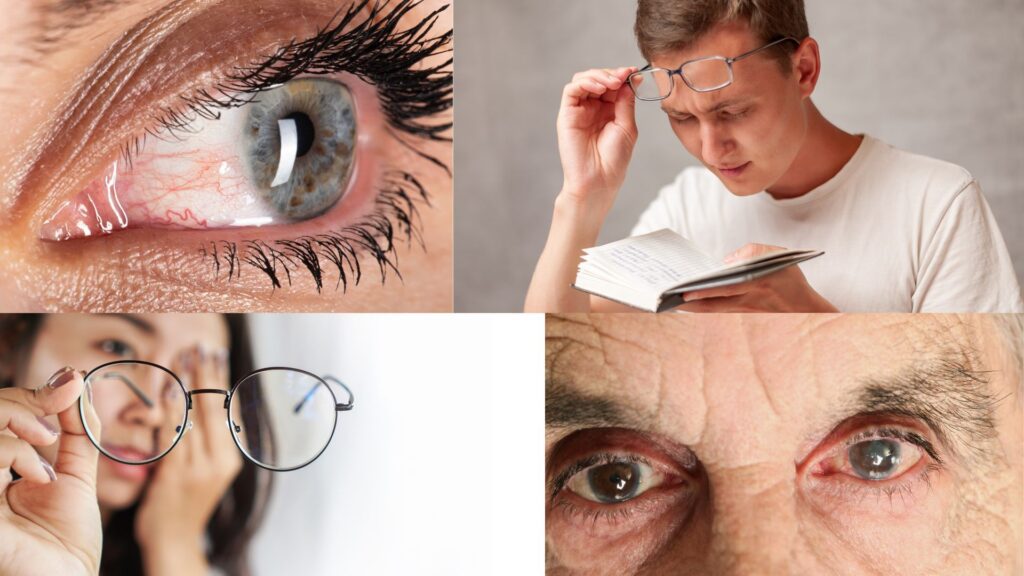Understanding your eye health is crucial. Many of us may have minor vision issues, but serious eye problems could dramatically impact your life quality. This article will shed light on four prevalent eye conditions and how to manage them.
The Importance of Regular Eye Check-ups
Just as regular health check-ups are essential, maintaining a routine eye check-up schedule plays a significant role in maintaining good vision and detecting eye problems early. This brings us to the importance of the field of optometry.
The Role of Optometry
Optometry is an eye care discipline that involves examining the eyes for vision defects and prescribing corrective lenses or treatment as needed. It plays a vital role in diagnosing and treating common eye conditions.
Common Eye Problem 1: Cataracts
Understanding Cataracts
A cataract is a condition where the lens in your eye, which is usually clear, becomes cloudy. Symptoms may include blurry vision, double vision, or trouble seeing at night.
How to Manage Cataracts
Cataract treatment typically involves surgery to replace the cloudy lens with an artificial one. The procedure is safe and effectively restores vision.
Common Eye Problem 2: Macular Degeneration
Understanding Macular Degeneration
Macular degeneration is a progressive eye condition affecting as many as 10 million Americans, making it the leading cause of vision loss. It damages the central vision and impacts the ability to see detail.
Preventing Macular Degeneration
While there’s no cure, some steps can help prevent macular degeneration, like not smoking, eating a healthy diet rich in green, leafy vegetables, and regular exercise.
Common Eye Problem 3: Glaucoma
Understanding Glaucoma
Glaucoma is a group of eye conditions damaging the optic nerve, crucial for good vision. This damage is often caused by an abnormally high pressure in your eye.
Treatment Options for Glaucoma
Treatment can’t reverse any loss of vision, but it can stop it from getting worse. Treatments usually involve eye drops, laser treatment, or surgery.
Common Eye Problem 4: Dry Eyes
Understanding Dry Eyes
Dry eyes occur when your tears aren’t able to provide enough lubrication for your eyes. This can cause a lot of discomfort and result in various symptoms like stinging, burning, redness, or watery eyes.
Tips to Alleviate Dry Eyes
While dry eyes can’t always be prevented, some strategies can help manage this condition. These include avoiding wind exposure, using a humidifier at home, and regularly blinking especially when using digital devices for long periods.
Conclusion: Prioritizing Eye Care
Eye problems can range from mildly irritating to profoundly impacting your daily life. Understanding and early detection of conditions like cataracts, macular degeneration, glaucoma, and dry eyes can significantly improve your quality of life. Regular eye care and check-ups are a vital aspect of this.
FAQs
What are the first signs of eye problems?
Early signs can include blurry vision, double vision, dryness, excessive tearing, or redness.
What causes most eye problems?
Eye problems can be caused by a variety of factors, including age, genetics, injury, disease, or strain from overuse.
Can eye problems be cured?
Some eye conditions are treatable and even reversible if detected early. Others, like macular degeneration, currently have no cure, but their progression can be slowed.
How often should I get an eye check-up?
Most optometrists recommend yearly check-ups. However, if you’re at high risk or have an existing eye condition, you might need to visit more often.
Can lifestyle changes improve eye health?
Absolutely! Regular exercise, a balanced diet rich in nutrients, adequate hydration, and protecting your eyes from excessive light and strain can all contribute to better eye health.





